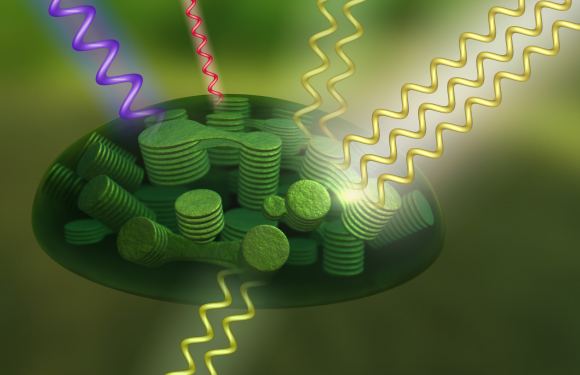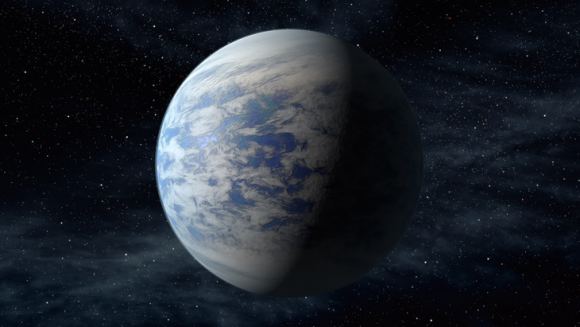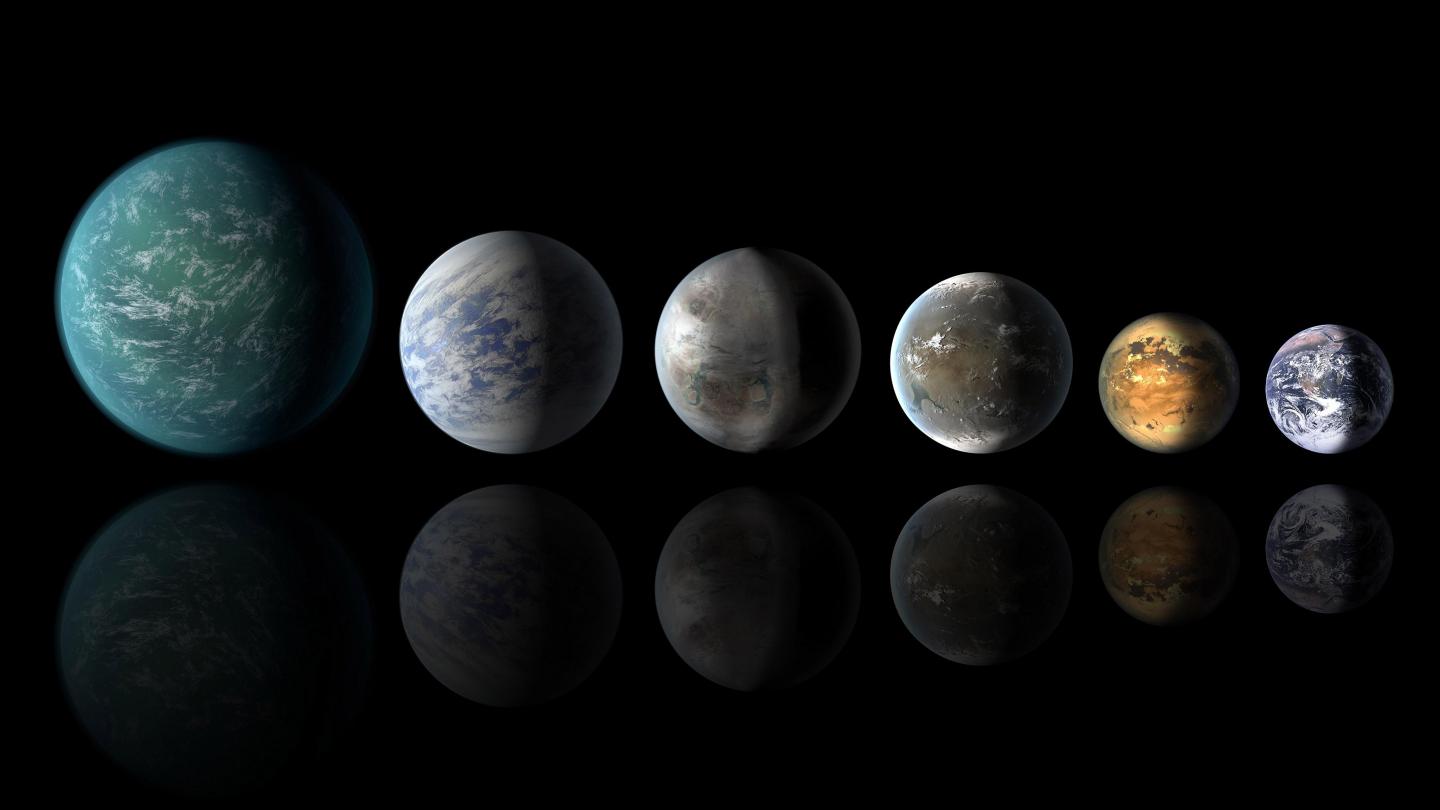Finding potentially habitable planets beyond our Solar System is no easy task. While the number of confirmed extra-solar planets has grown by leaps and bounds in recent decades (3791 and counting!), the vast majority have been detected using indirect methods. This means that characterizing the atmospheres and surface conditions of these planets has been a matter of estimates and educated guesses.
Similarly, scientists look for conditions that are similar to what exists here on Earth, since Earth is the only planet we know of that supports life. But as many scientists have indicated, Earth’s conditions has changed dramatically over time. And in a recent study, a pair of researchers argue that a simpler form of photosynthetic life forms may predate those that relies on chlorophyll – which could have drastic implications in the hunt for habitable exoplanets.
As they state in their study, which recently appeared in the International Journal of Astronomy, while the origins of life are still not fully understood, it is generally agreed that life arose between 3.7 and 4.1 billion years ago (during the late Hadean or early Archean Eon). At this time, the atmosphere was radically different from the one we know and depend upon today.

Rather than being composed primarily of nitrogen and oxygen (~78% and 21% respectively, with trace gases making up the rest), Earth’s early atmosphere was a combination of carbon dioxide and methane. And then, roughly 2.9 to 3 billion years ago, photosynthesizing bacteria appeared that began to enrich the atmosphere with oxygen gas.
Because of this and other factors, Earth experienced what is known as the “Great Oxidation Event” about 2.3 billion years ago, which permanently altered our planet’s atmosphere. Despite this general consensus, the process and timeline in which organisms evolved to convert sunlight into chemical energy using chlorophyll remains the subject to a lot of guesswork.
However, according to the study conducted by Shiladitya DasSarma, and Dr Edward Schwieterman – a professor of molecular biology at the University of Maryland and an astrobiologist at the UC Riverside, respectively – a different type of photosynthesis may predate chlorophyll. Their theory, known as “Purple Earth”, is that organisms conducting photosynthesis using retinal (a purple pigment) emerged on Earth before those that use chlorophyll.
This form of photosynthesis is still prevalent on Earth today and tends to dominate in hypersaline environments – i.e. places where salt concentrations are especially high. In addition, retinal-dependent photosynthesis is a far simpler and less efficient process. It was for these reasons that DasSarma and Schwieterman considered the possibility that retinal-based photosynthesis may have evolved sooner.

As Professor DasSarma told Universe Today via email:
“Retinal is a relatively simple chemical compared to chlorophyll. It has an isoprenoid structure and there is evidence for the presence of these compounds on the early Earth, as early as 2.5-3.7 billion years ago. Retinal’s absorption occurs in the yellow-green part of the visible spectrum where a lot of the solar energy is found, and it is complementary to chlorophyll’s absorption in the flanking blue and red regions of the spectrum. Retinal-based phototrophy is much simpler than chlorophyll-dependent photosynthesis, requiring only the retinal proteins, a membrane vesicle and ATP synthase to convert light energy into chemical energy (ATP). It seems reasonable that the simpler retinal-dependent photosynthesis evolved earlier than the more complex chlorophyll-dependent photosynthesis.”
They further hypothesized that the emergence of these organisms would have come soon after the development of cellular life, as an early means of producing cellular energy. The evolution of chlorophyll photosynthesis could therefore be seen as a subsequent development which evolved alongside its predecessor, with both filling certain niches.
“Retinal-dependent phototrophy is used for light-driven proton-pumping, which results in a transmembrane proton-motive gradient,” said DasSarma. “The proton-motive gradient may be chemiosmotically coupled to ATP synthesis. However, it has not been found linked to C-fixation or oxygen production in extant (modern) organisms, like in plants and cyanobacteria, which use chlorophyll pigments for both of these processes during stages of photosynthesis.”
“The other big difference is the light spectrum absorbed by chlorophylls and (retinal-based) rhodopsins,” added Schwieterman. “While chlorophylls absorb most strongly in the blue and red part of the visual spectrum, bacteriorhodopsin absorbs most strongly in the green-yellow.”
So whereas chlorophyll-driven photosynthetic organisms would absorb red and blue light and reflect green, retinal-driven organisms would absorb green and yellow light and reflect purple. While DaSarma has suggested the existence of such organisms in the past, she and Schwieterman’s study looked at the possible implications that a “Purple Earth” could have in the hunt for habitable extra-solar planets.
Thanks to decades of Earth observation, scientists have come to understand that green vegetation can be identified from space using what’s called the Vegetation Red Edge (VRE). This phenomenon refers to how green plants absorb red and yellow light while reflecting green light, while at the same time glowing brightly at infrared wavelengths.
Seen from space using broadband spectroscopy, large concentrations of vegetation are therefore identifiable based on their infrared signature. The same method has been proposed by many scientists (include Carl Sagan) for the study of exoplanets. However, its applicability would be limited to planets that have also evolved chlorophyll-driven photosynthetic plants, and which are distributed over a significant fraction of the planet.

In addition, photosynthetic organisms only evolved in Earth’s relatively-recent history. Whereas Earth has existed for roughly 4.6 billion years, green vascular plants only began to appear 470 million year ago. As a result, exoplanet surveys that search for green vegetation would only be able to find habitable planets that are far along in their evolution. As Schwieterman explained:
“Our work is concerned with the subset of exoplanets that may be habitable and whose spectral signatures could one day be analyzed for signs of life. The VRE as a biosignature is informed by just one type of organism—oxygen-producing photosynthesizers like plants and algae. This type of life is dominant on our planet today, but it was not always so and may not be the case on all exoplanets. While we do expect life elsewhere to have some universal characteristics, we maximize our chances of success in the search for life by considering the diverse characteristics organisms elsewhere may have.”
In this respect, DeSharma and Schwieterman’s study is not unlike the recent work of Dr. Ramirez (2018) and Ramirez and Lisa Kaltenegger (2017) and other researchers. In these and other similar studies, scientists have proposed that the concept of a “habitable zone” could be extended by considering that Earth’s atmosphere was once very different than it is today.
So rather than searching for signs of oxygen and nitrogen gas and water, surveys could look for signs of volcanic activity (which was far more prevalent in Earth’s past) as well as hydrogen and methane – which were important for early conditions on Earth. In much the same way, according to Schwieterman, they could search for purple organisms using methods that are similar to what is used to monitor vegetation here on Earth:
“The retinal light-harvesting we discuss in our paper would produce a signature distinct from the VRE. While vegetation has a distinctive “red-edge,” caused by strong absorption of red light and reflection of infrared light, the purple membrane bacteriorhodopsins absorb green light most strongly, producing a “green-edge.” The characteristics of this signature would differ between organisms suspended in water or on land, just as with ordinary photosynthesizers. If retinal-based phototrophs existed at high enough abundance on an exoplanet, this signature would be embedded in that planet’s reflected light spectrum and could potentially be seen by future advanced space telescopes (which would also be searching for the VRE, oxygen, methane, and other potential biosignatures, too).”
In the coming years, our ability to characterize exoplanets is going to improve dramatically thanks to next-generation telescopes like the James Webb Space Telescope (JWST), the Extremely Large Telescope (ELT), the Thirty Meter Telescope, and the Giant Magellan Telescope (GMT). With these added capabilities, and a greater range of what to be on the lookout for, the designation “potentially habitable” could take on new meaning!
Further Reading: Astrobiology Magazine, IJA

